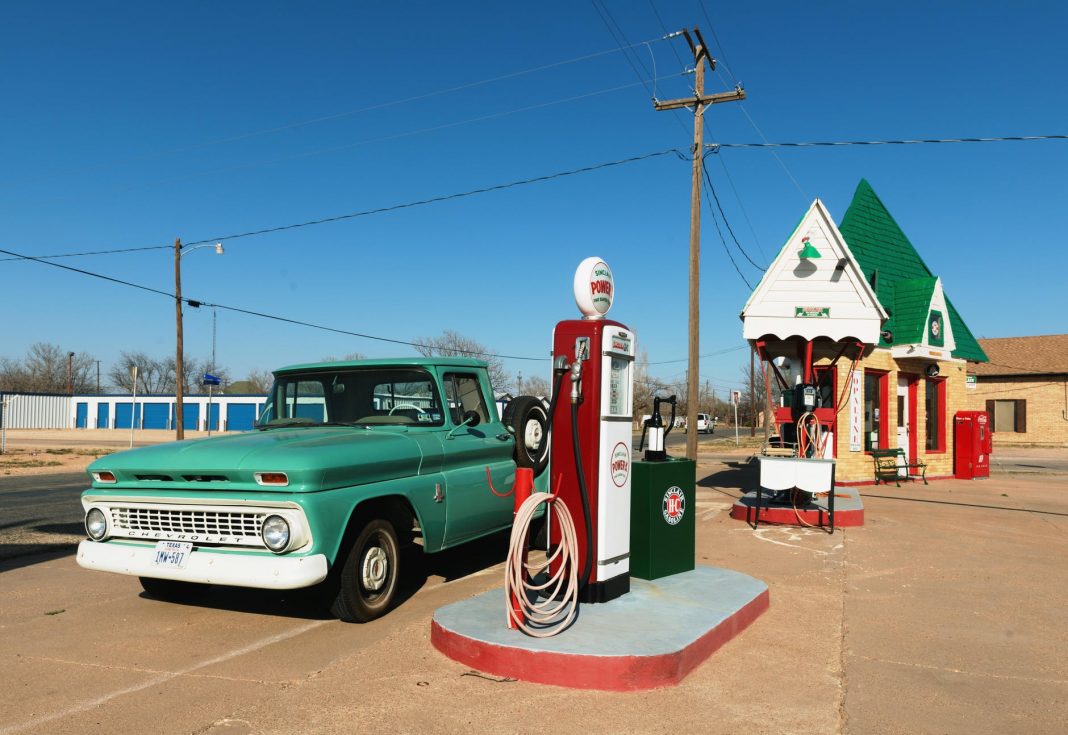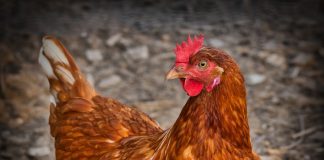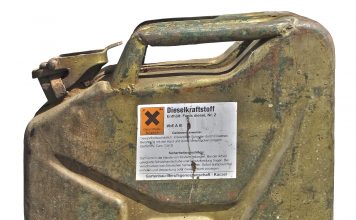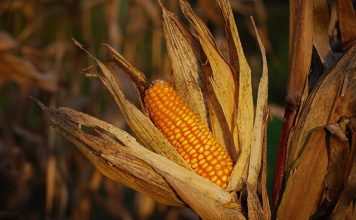 |
|
| Issue #101 • September/October, 2006 |
My Ford F-250 diesel crew-cab pickup did not cause me to become interested in making my own bio-diesel fuel. No, the final straw was when I filled up its 48-gallon fuel tank at a cost of $150 that made me decide to find out what this bio-diesel commotion was all about!
I think it took longer for me to consider bio-fuel than most; as all I ever heard or read about bio-diesel was coming from the save-the-earth crowd driving around in old diesel school buses, plastered over with “flower power” and faded “stop global warming” bumper stickersindicators which call for immediate purging from my memory. Actually, a family friend named Jack Jones who owns multiple diesel vehicles asked me one day if I knew how to make bio-diesel fuel, and this started me on a quest.
Regardless of who the early promoters were, making your own fuel to power diesel trucks, farm tractors, and back-up generators is a perfect fit for anyone living off-grid or on a farm. Not only is diesel fuel easy to make, but it requires very little equipment to get started. Like all hobbies that can turn into an obsession, it is certainly possible to refine the process with more expensive equipment later, so I will start with the basics.
Where to start
You will need a local and continuous supply of discarded cooking oil, and without it, you are just wasting your time. This means you need to make friends with the managers of nearby fast-food restaurants.
|
All bio-diesel-making processes start with discarded waste vegetable oil (WVO) from commercial deep fryers, and may include lard and other kitchen grease. In most cases, this waste cooking oil is dumped out at the end of each day into temporary storage tanks behind the restaurants. Currently, most fast-food locations pay somebody to remove this discarded oil each week along with the other restaurant wastes. However, as the popularity of bio-diesel becomes more mainstream, we will soon be protecting our own sources and fighting over who gets there first each week! Since you cannot just back up to a 500-pound tank of liquid waste oil and dump it into a bucket, you will need a 50 to 100-gallon tank in your truck bed or on a small trailer. You will also need a battery-powered fuel pump; but not to worry, all these items are easy to find, and I will list suppliers of all equipment discussed at the end of this article.
I have stressed that you must find a source of waste vegetable oil first. If you have to drive 100 miles into a city to locate a fast-food restaurant, you may be using more fuel collecting waste oil than you can manufacture, so keep this in mind.
Chemical process
I am not going into a detailed description of the actual chemical process that takes place, as you will easily learn this when you get more involved. Because it’s so easy to make bio-diesel fuel, the Internet and do-it-yourself magazines are full of advertisements for kits that are fairly inexpensive and will make it much easier for you to get started. Once you have actually started producing your own diesel fuel, there are fuel test kits, fuel filters, and other devices you can purchase to improve the quality and consistency of your fuel making.
Regardless of whose fuel-making kit you buy (and there are plenty of them), it takes four things to make bio-diesel: Waste vegetable oil, methanol (racing fuel), sodium hydroxide (household lye), and water. No matter how simple or complex the process you choose, these are an absolute must.
Safety issues
Before you head out in the backyard and drop a can of drain opener (lye) and your son’s model airplane fuel (methanol) into a coffee can full of cooking oil, a few safety cautions are in order. Due to the minimum equipment required to make bio-diesel, it is certainly possible to build your own processor from scratch. However, how these very reactive chemicals are mixed together and their handling during this mixing presents some serious safety concerns.
First, methanol is extremely flammable, but unlike most other flammable liquids, it does not have a visible flame when it burns. You may have watched high-performance sports car racing when a member of the pit crew suddenly started rolling on the ground for no apparent reason. These cars are fueled by methanol, and fuel spills are common during fast pit stops, which sometimes results in a crew member getting severe burns even though you see no flames or smoke. Once it is mixed with lye, the resulting sodium methoxide will burn anywhere it touches bare skin. In addition, you will not realize you are being burned, as it immediately kills all nerve endings.
|
If you have ever used common household lye to open clogged drains or make soap, you know lye is also very dangerous to your skin and gets extremely hot when poured into water. Lye will also quickly corrode aluminum, tin pans, zinc coatings, and most paints, so use only glass, stainless steel, or chemical-grade polyethylene containers when handling these caustic chemicals.
A final warning: Sodium methoxide (mixture of methanol and lye) vapors are extremely dangerous to breathe, so your fuel-making work area should be well ventilated (preferably an outside shed). Have a fire extinguisher and a nearby water hose constantly discharging fresh water into a bucket during the actual mixing process.
Bio-diesel making kits
Although there are endless possible piping and tank designs, I have found that most of the bio-diesel making kits can be divided into two general categories, and where you live and the quality of the fuel desired can have a lot to do with which process you use.
At the very basic level is the no-heating process that consists of two tanks, usually having funnel-shaped bottoms. Almost all of these advertised kits will make an average of 40 to 44 gallons of diesel fuel per cycle, so the larger tank will be about 60 gallons in size. This tank will hold the waste cooking oil at the start of the process.
Mounted next to the larger tank is a much smaller tank, usually about 15 gallons, which will hold the methanol (racing fuel) and sodium hydroxide (household lye) mixture. The actual amount of these two chemicals that will be pumped into the waste vegetable oil tank after they are mixed depends on the quality and water content of the cooking oil being used. As a general guide, you will require about 20% of methanol-to-waste-oil by volume, which averages about 8 gallons per 40 gallons of vegetable oil. This chemical reaction will also generate approximately 5 gallons of glycerin per cycle, which will form at the bottom of the mixing tank after the 24-hour reaction time. Since glycerin is bio-degradable, it is usually drained off and discarded.
Waste vegetable oil will contain food particles and various levels of moisture that need to be removed before starting. Most suspended solids can be removed by first passing the used oil through a strainer as you fill the mixing tank. Mixing lye with vegetable oil and water makes excellent soap, so too much water in the waste vegetable oil and your diesel fuel may turn out to be really good liquid soap.
|
To reduce the effects of colder ambient air temperature and improve moisture removal, some bio-diesel kits use a glass-lined electric hot-water heater for the mixing tank. The tank is modified by adding different piping and valve connections to the original hot, cold, and drain openings. This makes an excellent way to heat up the waste oil to 130° F before starting, which helps evaporate any remaining moisture in the waste oil.
Bio-diesel kits that do not involve heating the oil first to remove the moisture may work better in warm climates, as I cannot imagine trying to do this in a Wisconsin barn in February. However, the no-heat kits do produce bio-diesel if you follow the directions and avoid letting the mixture get too cold during the mixing and reacting process. Some kits include tank insulation blankets to retain the heat produced by the chemical reaction.
Although the non-heating bio-diesel kits can produce quality bio-diesel fuel, I personally think the heating process may introduce a higher level of quality control and reduces the chance for unwanted soaps and excess glycerin to be produced. However, each system and tank type has advantages and disadvantages that need to be considered.
Buying the chemicals
Methanol is a popular fuel for automotive racing, and high-performance engine shops and racetracks are a good place to purchase small quantities. Petroleum distributors usually sell methanol in larger 30 and 55-gallon drums if you can afford to buy this much at one time. Do not be surprised if you get a visit from the local sheriff, as this is also the primary ingredient for methamphetamine (“meth”) labs manufacturing illegal drugs. Make sure they know who you are and what you are going to do with the methanol.
It is also a good idea to discuss your methanol storage plans with your county’s fire marshal, as volunteer firefighters do not expect to find drums full of highly toxic and potentially explosive chemicals when called to fight a fire in an old barn or garage. Most fire marshals will appreciate you considering the safety of their volunteers who will be the first to respond if you have a very bad day.
Since you will use very little lye per batch of bio-diesel, your local grocery store will be your best source. Also, by buying lye in small sealed cans, there is much less chance of moisture reducing its effectiveness after it has been opened several times.
|
Mixing the ingredients
Regardless of whether you will be using a water heater-type mixing tank or polyethylene funnel-bottomed mixing tank, the mixture of Methanol and lye in the smaller tank will be transferred into the larger mixing tank already containing the waste oil. Most bio-diesel kits include at least one explosive-proof electric pump pre-piped to a series of manual ball-valves that allow using a single pump to fill the tanks, mix the liquids in the tanks, and drain the tanks, depending on which valves are opened or closed.
The actual testing, measuring, and mixing takes about one hour. Then you allow the chemical process to take place, which takes 24 hours. Most kits include a dial-timer to shut off the mixing pump at the proper time, so you do not need to stand around and wait. Unwanted glycerin will settle at the bottom of the mixing tank during this time, then be drained and discarded.
Titration
As mentioned earlier, although very little will be needed, the actual amount of lye required will be slightly different for each batch of used cooking oil. If you add more than the required amount of lye, your mixing tank could end up filled with gel-type soap. If you use too little lye, only part of the cooking oil will convert into bio-diesel, with a large layer of glycerin settling to the bottom of the mixing tank.
Since determining how much lye to use is so critical, most bio-diesel kits include a PH test kit for the waste oil, like those used to test pool water before adding chemicals. However, the testing of waste oil is slightly more detailed, as it uses a process called “titration.” This test requires samples to be accurately measured and mixed according to specific instructions before the resulting sample is tested for PH level. Entering the test results on a mixing chart gives the exact weight of lye this particular batch of used cooking oil will require to fully convert to bio-diesel. As a general guideline, most used cooking oil will require abut six to seven grams of lye for each liter of used cooking oil.
Vegetable oil will not combine directly with Methanol, so the lye serves as a catalyst for this chemical reaction, and the amount required is critical to the success of the final product. This is why the titration test is so important before starting every new batch.
Water wash
I realize my initial warnings described how any water in the used cooking oil will cause the lye to produce soap, so why do we need to add water, especially to fuel? I had a hard time with this one myself when I first started. This water is added after the mixing of the used oil, methanol, and lye has taken place and the bio-diesel fuel has been created.
The purpose for adding water at this final stage is to remove any remaining waste products. Regardless of how good you have measured and mixed, there will always be some unwanted “trash” that needs to be removed from the final product, including left-over lye, glycerin, soap, and unprocessed methanol. All of these waste products are water soluble and can be easily removed from the bio-diesel fuel with a water wash. However, this does not mean turning the water hose full blast into the mixing tank. If you have ever taken a jar half-full of any oil, added water, and vigorously shook it, you ended up with a milky foam mixture that was almost impossible to separate into the original two layers of oil and water.

The water-spray wash process involves tiny “misting” spray nozzles located in the top of the mixing tank that gently introduces water down onto the surface of the oil in very tiny droplets without causing any physical mixing with the oil. After a few hours, this water mist will migrate down through the bio-diesel fuel and absorb the waste products before settling to the tank bottom where it is manually drained off.
More sophisticated processes use a bubble-wash similar to an aquarium aerator. A tank is slowly filled 1/3 full of water and 2/3 full of finished bio-diesel fuel without mixing. A small air pump sends air down to the bottom of this tank through a tube ending with an aquarium “air stone,” which produces lots of tiny air bubbles. The rising air bubbles cause unwanted contaminants in the oil to dissolve in the water without mixing. The water is drained off, and this process is repeated at least three times over a period of several hours before all the contaminants have been removed.
After the wash process has been completed, the finished bio-diesel fuel is allowed to stand again overnight, giving time for any remaining water to settle to the tank bottom where it is drained off. The piping valves are then reversed and the pump transfers the final product to a 55-gallon oil drum for storage until ready to use. Some kits include a special 5-micron fuel filter on this delivery line to remove any remaining particles that could harm injectors or other diesel engine parts.
Conclusions
Although this has been more of an overview, it should give you a basic understanding of how bio-diesel fuel is made and how easy you can do this yourself using one of the many kits available. Most basic kits start around $1,800 for those using the non-heated tank process, and $2,900 for kits using more commercial-quality components. I also found several sources that sell the plumbing packages containing only the explosive-proof pump and pre-piped valve assembly for under $1,000, which you can easily connect to your own electric hot water tank that you can buy locally.
Regardless of which kit you decide to purchase, or which level of sophistication your process will involve, please follow all safety instructions and wear proper protective eyewear, chemical-resistant gloves, respirator, and splash-proof clothing. Work only in a well-ventilated area. You should also know that transporting and storing methanol is extremely hazardous, and the National Fire Code only allows two 5-gallon cans to be stored in a single residential location. There have been homes burned down in the past from people involved in automotive and go-cart racing who carelessly stored a 55-gallon drum of methanol in their attached garage.
The following web links have some excellent free information on bio-diesel making. The Bio-diesel Community website and the Bio-diesel Discussion Forum have extensive free information and photographs describing each phase of the bio-diesel making process, including: Chemistry, testing, mixing, washing, and filtering. The bio-diesel equipment suppliers also listed below have everything from individual pipe fittings to complete kits. Be sure to check all of the links for more information.
Sources of Free Biodiesel Making Information
Non-profit bio-diesel community web site: www.biodieselcommunity.org
Bio-diesel discussion forum: www.biodiesel.infopop.cc/eve/
Free photos of home-made bio-diesel systems: www.biodieselpictures.com
Mike Pelly, advocate of bio-diesel with practical advice for the novice: www.journeytoforever.org
Sources for Quality Biodiesel Kits and Equipment
| Utah Bio-diesel Supply: www.utahbiodieselsupply.com fax only: 801-660-4054Home Bio-Diesel Kits: www.homebiodieselkits.com P.O. Box 5515 Bella Vista, AR 72714 800-679-1398 9:00 am to 7:00 pm Mon.-Fri. EZ Bio-diesel: |
Bio-diesel Warehouse: www.diyfuel.com 3-6 Simm Lane Newtown, CT 06470 203-426-1876B100 Supply, LLC: www.b100supply.com P.O. Box 1184 Woodstock, GA 30188 678-528-1899 Bio-diesel Solutions: |
[weaver_widget_area id=’articles_about_yago’ class=’text3′]


















